Too Many Tortas
A torta is a kind of Mexican sandwich–scratch that. It’s not just a single type of sandwich. Tortas are a category of Mexican sandwiches, and hard to pin down. They might be served in a crusty bolillo or a soft telera roll; the bread may or may not be toasted; they can be medium-sized, quite large, or alarmingly gigantic; the filling may be any type of Mexican dish you’d normally get in a taco–carne asada, al pastor, ground beef, chicken, chorizo, or any of dozens of other fillings, or ham, or hot dogs, or some combination of the above; said filling may be served hot or cold; these fillings may or may not be accompanied by refried beans, cheese, lettuce, tomatoes, onions, cilantro, salsa, avocado, sour cream, mayonnaise, or other condiments.
Tortas may be among the most variable types of sandwiches we’ve covered at the Tribunal. I personally have eaten dozens of them this month. Is there such a thing as too many tortas? I’ve certainly tried to find out. Nearly every time I’ve stopped to get one this month, I’ve walked or driven past a half-dozen or more other tempting-looking places and often had a second or even a third torta in short order. I’ve tried many of the standard places in my neighborhood. I’ve driven to some of the more well-known or notorious places in the Chicago area. I’ve sought out some more obscure purveyors and some unique sandwiches. I haven’t even scratched the surface, and I am certain I will have missed some highly recommended tortas.
Local Tortas
One recommendation I did not miss was that of my friend Paul, who commented on the site earlier this month to let me know that I should try the Torta Milanesa at Burrito Alegre, a small strip-mall joint a few miles north of my house in Alsip, IL, located directly behind another, flashier-looking Mexican restaurant.
Burrito Alegre was an interesting little place, absolutely overrun with a variety of indoor plants, and doing steady business on a Saturday afternoon. As Paul had promised, the Milanesa–breaded steak–was quite good, one of the better examples I’ve had, well-seasoned and fried. The torta was also well put together, with the soft telera roll heated up on the griddle, and the expected accoutrements. Some other things we ordered there were less well thought-out, but the torta itself was great.
If you go into just about any little family-run taqueria though, and ask which torta they’d recommend, they are likely to tell you to try the milanesa. It is one of the less sloppy tortas to eat, given the rigidity provided by the breaded and fried steak. I had another at Burritos Maria in Oak Forest, and while the sandwich wasn’t as well-made as Burrito Alegre’s–the roll wasn’t toasted on the griddle, and the milanesa itself wasn’t quite as good–I had no complaints about this sandwich. A torta milanesa is a pretty safe bet, as tortas go.
- Torta Milanesa from Burritos Maria
- Burritos Maria in Oak Forest
By way of comparison, take this torta milanesa from El Gallo Tapatio and compare it to their carne asada torta. Even with an excess of beans rendering the milanesa fairly sloppy, it held together well until the last bite, while the carne asada was falling apart before a bite was taken. Don’t get me wrong–carne asada makes for a fine torta. Just make sure you have plenty of napkins.
- Steak torta from El Gallo Tapatio
- Torta Milanesa from El Gallo Tapatio
- El Gallo Tapatio in Alsip
Another more solid type of torta filling is cecina, or salted dried beef. Mindy picked up a couple of tortas to bring home from Pueblito in Orland Park earlier this month, a cecina and a bistec a la Mexicana.
- Bistec a la Mexicana torta from Pueblito
- Torta cecina from Pueblito
- Torta cecina from Pueblito
- Bistec a la Mexicana Torta from Pueblito
The cecina doesn’t have quite the same rigidity that the crisp breadcrumb coating provides to milanesa though, and the meat is chewier without being pre-chopped into bite-sized pieces like carne asada. While I enjoy tacos with cecina, I don’t think I’d try it in a torta again. Bistec a la Mexicana, on the other hand, is a brilliant and flavorful torta filling, with onions, tomatoes, and chili peppers cooked and softened on the griddle along with the steak. Sloppy as heck, sure. But delicious.
Unfortunately, this torta al pastor from our local favorite Los Sarapes in Midlothian did not turn out great. I’m not sure if I just don’t care for their al pastor, or if it was the general lack of care with which the sandwich was put together–no toasting of the bread, proportions that seemed vaguely off–but it was probably my least favorite of the tortas I’ve tried this month.
Ian’s torta, the milanesa de pollo, was more successful, centered around a very decent piece of fried chicken breast. Since Ian ordered it without beans or tomatoes, though, it was very much like a standard fast food chicken sandwich, albeit with Mexican queso blanco. As I mentioned, this place is a local favorite of ours, so I’ll be back, but I doubt I’ll order a torta next time.
Far more interesting was the torta de cabeza al vapor (steamed beef head) from another local establishment, Tacos El Chiquito in Posen, IL. The steamed beef varied in texture from soft and fatty to lean and slightly chewy but still quite tender, but with a lush beefy flavor. It was served with a shockingly good salsa verde on the side, among the two best salsas we had this month. They also do a weekend carnitas “Estilo D.F” (Mexico City-style) that looks great. I have a feeling we’ll be working this place into rotation more often.
Super Tortas
Speaking of D.F. (Distrito Federal, or the Federal District in Mexico, these days synonymous with Mexico City), we visited Tortas D.F. in Chicago Heights this month, a small corner storefront about a mile south of the hospital where I was born. I’d found the place in a search for torta-serving establishments in my area, and while the menu results were inconsistent, I was fascinated by mention of a fried fish torta on a few of the online menus I found.
We found that they did indeed serve a fried fish torta, though it wasn’t to be found on their hand-written wall menus either. The tortas at Tortas D.F. tend toward the “Super Torta” style, with sometimes bizarre combinations of many different ingredients, and are named after the neighborhoods of Mexico City.
This “Torta Tacubaya” consisted of a very well-fried piece of fish on an astoundingly large, slightly crusty bread roll, with mayonnaise, lettuce, tomato, avocado, and thinly-sliced red onion. It was spectacular, I thought, and far far too large to finish in one sitting.
Unfortunately, we had ordered two of these monstrous tortas. The other, the Torta Neza, was listed as containing milanesa de res, jamon, pierna ahumada, queso blanco, and queso amarillo. I had not seen the items pierna ahumada or queso amarillo on menus previously and was excited to try them.
As it turns out, queso amarillo means “yellow cheese” and refers to plain old American cheese. Pierna Ahumada means smoked pork leg, but appeared to be merely a second type of ham.
It was not a bad sandwich–the ham and pierna ahumada were both griddled nicely, and there were multiple thin pieces of milanesa. The sandwich could have used something in the way of vegetable matter, but the mayonnaise and melted American cheese kept it from being dry. It was tasty enough, and while we could not finish half of it in the restaurant our sons polished it off when we brought the rest home.
This was not the only “Super Torta” I encountered this month. The Mexi-Tacos truck was parked outside my office one day. I had seen this truck previously, and had purchased more than a few breakfast burritos there, but it had been missing for some time, and had apparently been redecorated in the interim. I asked them what torta they’d recommend and without hesitation I was told the Campechano. I thought I recalled Campechano being a combination of Carne Asada and al Pastor, which sounded like a pretty great lunch to me, so I ordered it.
There was steak in there, alright. And ham. And… hot dogs? I’ve seen similar tortas before, but had generally thought of them as being called “Torta Cubana.” This truck, and Tortas D.F., which had hot dogs on roughly 3/4 of its tortas, showed me that I was wrong. I’m not against the idea of putting a sausage such as a hot dog into a sandwich like this. However, this was an extruded, skinless dog, no char on it, and added nothing to the sandwich but a void filled with fat and nitrites. Their other tortas looked good, and I’m a fan of the truck, but this torta did not work for me.
High End and Unusual Tortas
Of course, there is one inescapable name when it comes to tortas in Chicago. Rick Bayless has taken some heat over the cultural appropriation inherent in the vast success he’s had, and the empire of restaurants he’s launched, by taking a chef’s approach to Mexican food as a white American from Oklahoma. Very few if any people have argued that what he’s done with it isn’t delicious though.
XOCO is a sandwich shop he opened in the touristy River North neighborhood of Chicago about ten years ago, serving Mexican-style sandwiches that don’t bear much resemblance to the tortas found at the average neighborhood mom-and-pop taqueria. I don’t get there too often, but when I have, I’ve usually enjoyed what I’ve ordered. Mindy and I managed to get in a lunch there together this month, and while the sandwiches we ordered were terrific, they don’t always map as “Tortas” in my brain.
Mindy’s cochinita pibil torta consisted of flavorful shredded pork with black beans, bright pink pickled onions, and a brutally spicy habanero sauce on the side. The sandwich was good, though the pork itself could have been saucier–the super-crusty bread could have stood up to it, and the habanero sauce was too intense to use much of it. Still, between the beans, the annato-colored shredded pork, and the pickled onion, it was at least recognizably Mexican in style.
The Torta Cubana on the other hand, a sort of take on the Cuban sandwich, features both black beans and avocado, but the smoked pork, bacon, and smoky chipotle mustard give this sandwich far more of a BBQ feel than either Cuban or Mexican. The sandwich is pressed like a Cubano, making the crusty bolillo even more dense and crisp, but the sauce on the side and the soft fatty avocado make it easy enough to eat. It’s fantastic, and I’d go back to eat it again, but it seems slightly out of place, to my admittedly limited understanding, in a list of tortas.
5 Rabanitos in Pilsen was opened about 3 years ago by former Bayless chef Alfonso Sotelo, and offers similarly high-end takes on Mexican food. Mindy and I stopped in for dinner on our way home from work downtown recently, and were charmed and delighted by the place, jealously portioning out dollops from the small carafes of spectacular table salsas brought to the table along with the beautifully presented guacamole we’d ordered. Before we left, we’d already begun planning to return.
Mindy’s carne asada torta was not photogenic–the light in the restaurant, truth be told, did not lend itself well to food photography–and while the napa cabbage was an unusual addition to a torta, it worked well with the avocado cream and pickled onions as a light refreshing foil to the grilled steak and black beans. The telera roll was griddled enough to develop somewhat of a crust, and the combination of flavors and textures produced a perfectly balanced sandwich.
We are scheduled to write about the Torta Ahogada, or “drowned sandwich,” separately next month, but I couldn’t resist getting a sneak preview here. This very crusty bolillo, stuffed with carnitas, is served end-down in a spicy tomato and chile arbol broth. The broth soaks nicely into the hard crusty bread, softening it while providing a rich savory and spicy boost to the flavor, like a French Dip served with a fiery tomato soup instead of beef jus. It is not a neat sandwich to eat. My beard smelled fantastic when we left.
I mentioned my friend Paul earlier–he had also suggested another restaurant to me, back before I wrote about the Mexican Pambazo, that I didn’t quite get around to trying back then. However, the pambazo, a torta variant where the bread roll is soaked in a spicy chile guajillo sauce before serving, was fair game for this post I thought, so Mindy and I made our way to El Habanero in Logan Square to give it a shot.
While Pambazo can have any number of fillings, much like a regular torta, one of the classic fillings is papas con chorizo, soft waxy potatoes griddled with the brilliant red Mexican sausage chorizo, topped with lettuce, crema, and cheese. The hot, smoky, earthy exterior of the bread along with the salty, spicy chorizo, though tempered by the softness of the potato and the crisp brightness of lettuce/crema/cotija, makes every part of every bite of the sandwich intense.
We also ordered a more standard torta, the milanesa de pollo, and found it flawless as well, with a double layer of crisp breaded chicken breast along with the standard torta accompaniments, on a good bolillo roll, well griddled. The torta itself would stand out in the company of many I’ve tried this month, but the Pambazo makes this place a must-visit.
Mindy and I have driven past Las Picosas on south Pulaski in Chicago many times, most often on our way to another Mexican restaurant. (Birrieria Zaragoza does not serve tortas to my knowledge, but I don’t think I’d order one there if they did. The tortillas are too good to pass up.) We’ve noted it in passing, but it hasn’t been on our radar previously. However, when researching unusual or unique tortas I came across an item on their menu to which I felt drawn–the “lonche caliente,” or Hot Lunch sandwich.
Las Picosas’ Lonche Caliente is a pulled pork sandwich, essentially, served on a crusty torpedo-style roll, doused in a spicy red sauce, topped with lettuce, tomato, and grilled onions, with a scattering of pickled jalapenos on the side. Spicy, juicy, intensely savory, crisp and hot–this sandwich was a real find. It was not our biggest find of the month, though.
A Surprising Find
Mindy and I have different processes when we’re vetting a place. I look at menus, at photos, at websites if I can. What word of mouth I get is via friends or social media–mostly I operate on instinct and often poor judgement. Mindy, on the other hand, is an avid reader of crowdsourced reviews. She looks up the place on Yelp, on Trip Advisor; she reads and posts reviews on Google. As we were driving to Tortas D.F. this month, and Mindy was reading reviews of the place, she kept coming across comparisons to another nearby place called “Harvey’s.” After some additional research, she found this to be a shortened form of “La Mexicana Super Mercado / Downtown Harvey Tacos,” which was not too far out of our way home. Our stomachs bursting from the monster tortas we had just attempted to consume, we decided to make another stop anyway.
We were glad we did. “Harvey’s” is a small bodega with half-empty shelves that seems to be entirely supported by the little taco stand in the back. I’m still not entirely sure what the name of this place is. The sign out front is the newest thing about the place, so I’d tend to believe it. The taco stand’s menu does call itself “La Mexicana.” But the steady foot traffic of local residents appears to be happy calling the place “Harvey’s.”
These were Mindy’s favorite tortas of the month. And they were really really good–we went back the following week. They are not typical tortas though. They are served on very small, very soft, quite flat rectangular bread rolls. The filling options are steak, “fried pork” (carnitas), lomo (pork loin), chicken, and sometimes chicharrones. These fillings are stored in a steam table in their own juices. There is a small griddle behind the stand that is used to griddle the bread or tortillas, depending on what is ordered. “Everything” consists of cheese, mayonnaise, lettuce, onion, cilantro, and “sauce,” a red salsa. There are two or three small, extremely weathered formica tables where people can sit and eat.
Our first trip, Mindy ordered a steak torta and I ordered the “fried pork” torta, which I was later able to confirm was carnitas. The man working the taco stand cut open the bread rolls, put them crust-side-down on the griddle, and spread mayonnaise on each bottom roll. When the outsides had toasted a bit, he brought them over to a piece of wax paper on his work surface, briefly drained a few spoonfuls of meat for each sandwich and scooped it onto the bread. He then scattered onion, cilantro, and lettuce on top before spooning some red salsa over it, placing the other half of each roll on top, cutting the sandwich in half, and serving it in a plastic boat. The entire process was done quite quickly, in a few practiced movements.
- Steak torta from La Mexicana Super Mercado / Downtown Harvey Tacos
- Steak torta from La Mexicana Super Mercado / Downtown Harvey Tacos
The steak in Mindy’s torta was aggressively seasoned but somewhat more tender than carne asada tends to be, given that it was soaking in juices for hours in a steam table. The onion/cilantro/salsa condimentation brought to mind a taco–the lettuce and cheese were there, but in a lesser role. The extremely soft bread, made more so by the meat juices that had soaked their way through the protective layer of mayonnaise, was barely up to the task of holding together what was probably the smallest torta we’d seen so far this month.
- Torta with “fried pork” from La Mexicana Super Mercado / Downtown Harvey Tacos
- Torta with “fried pork” from La Mexicana Super Mercado / Downtown Harvey Tacos
Even more so than the steak, the juices from the carnitas inundated the bread. While carnitas normally walk a line texturally between crisp edges and soft, falling apart insides, these carnitas were pure melt-in-your-mouth pork jello. Again, this was not only the smallest sandwich we’d seen this month, but most likely the sloppiest.
Yet somehow, the combination of so many just-slightly-wrong things in this case leads to a whole that transcends its individual parts. We went back this week to try the lomo, chicharrones, and the chicken, and I had to ask them to explain to me several times that this was pork loin, because it was so much more tender than I’d expect such a lean meat to be. The chicharrones were perhaps too tender, on the wrong side of squishy for me, but that is a nitpick. They were delicious anyway.

I like sandwiches.
I like a lot of other things too but sandwiches are pretty great







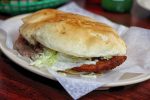






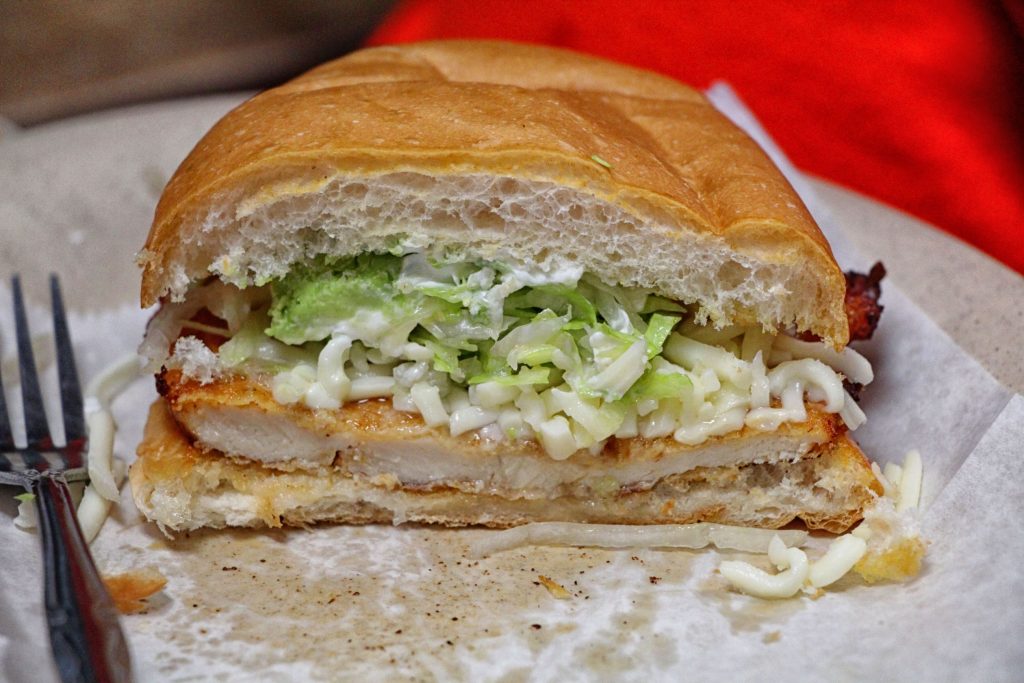

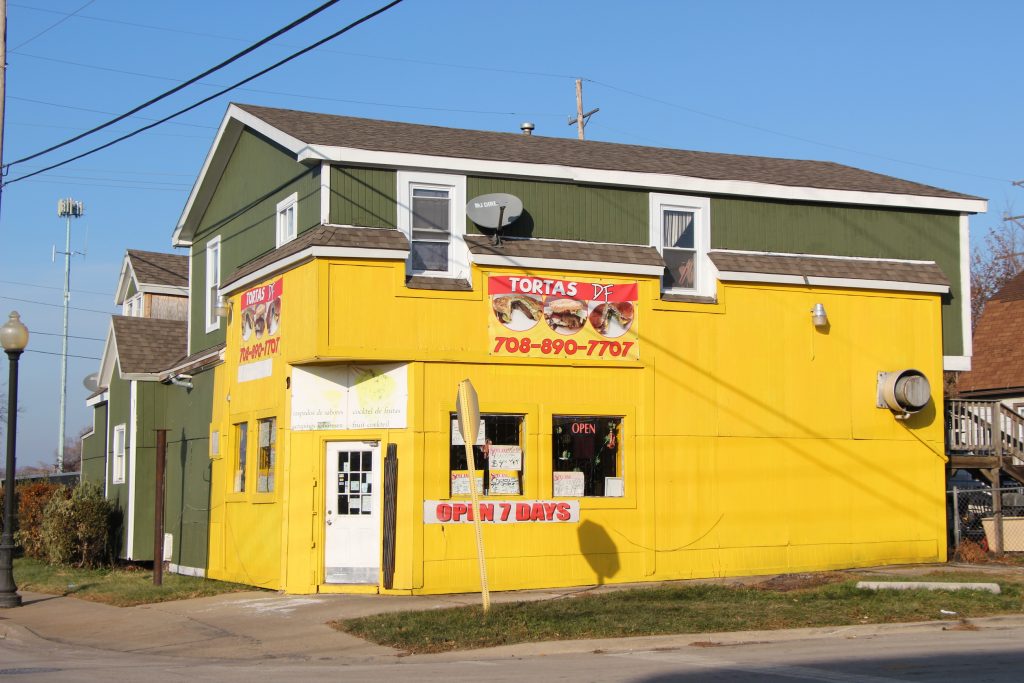



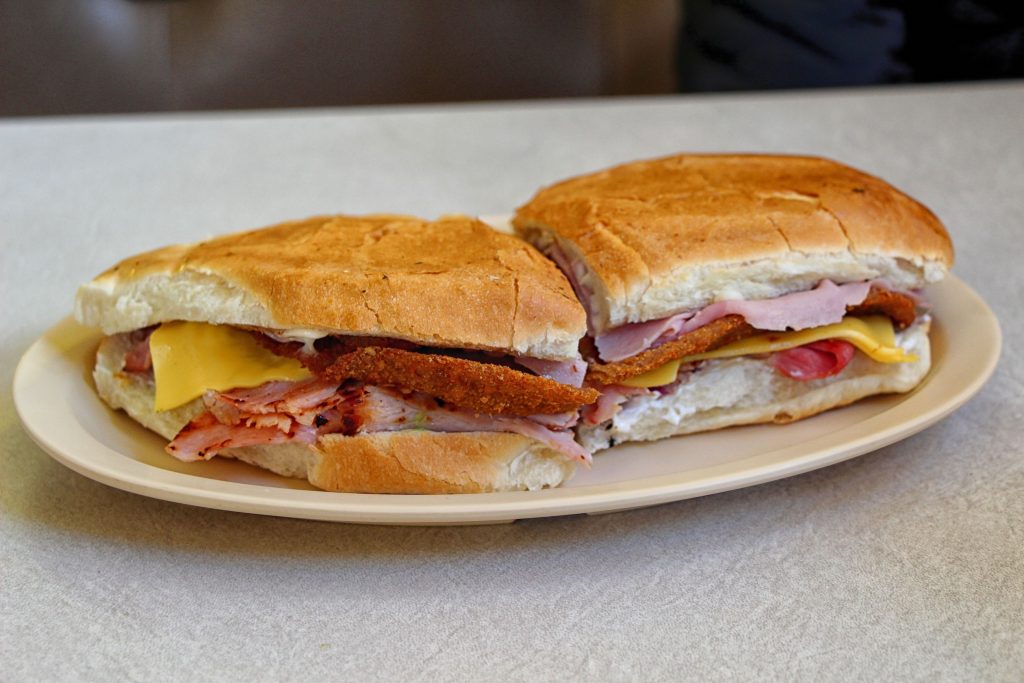

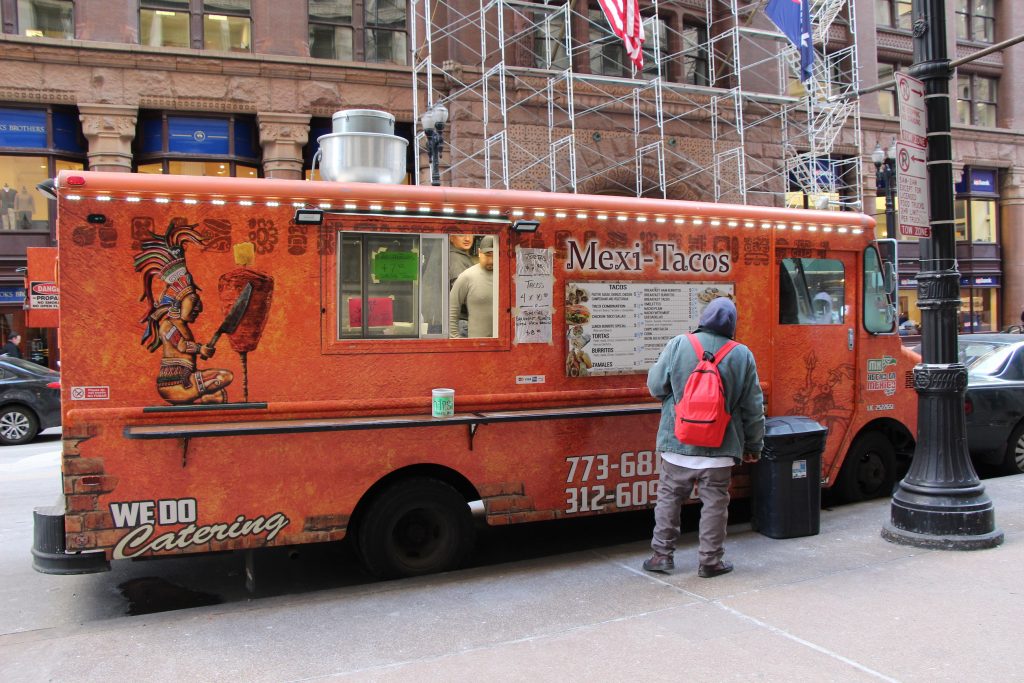


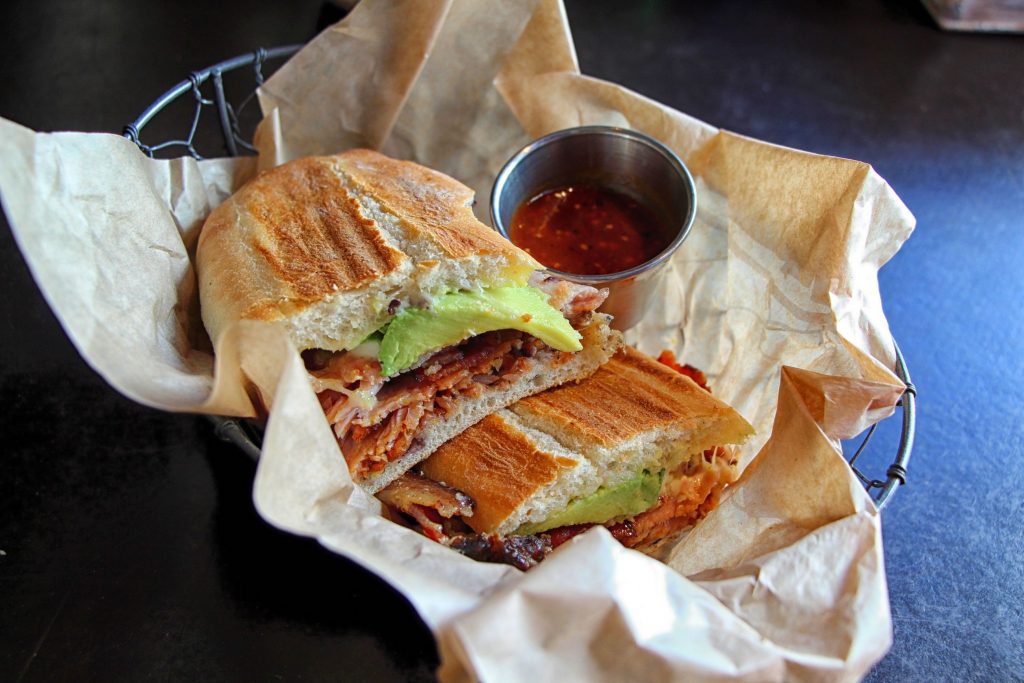






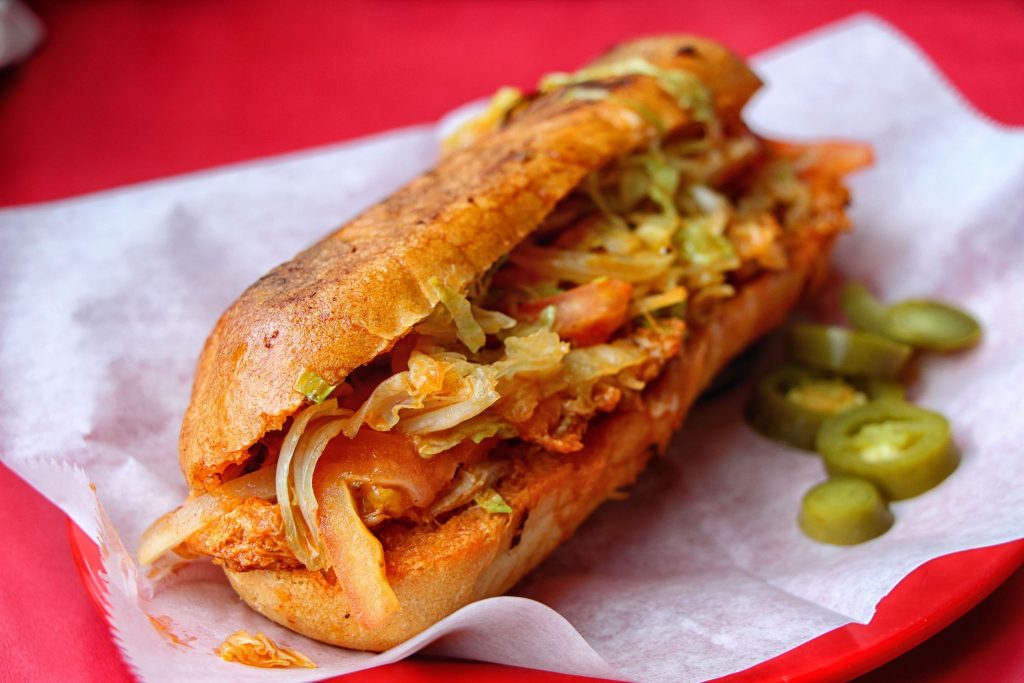

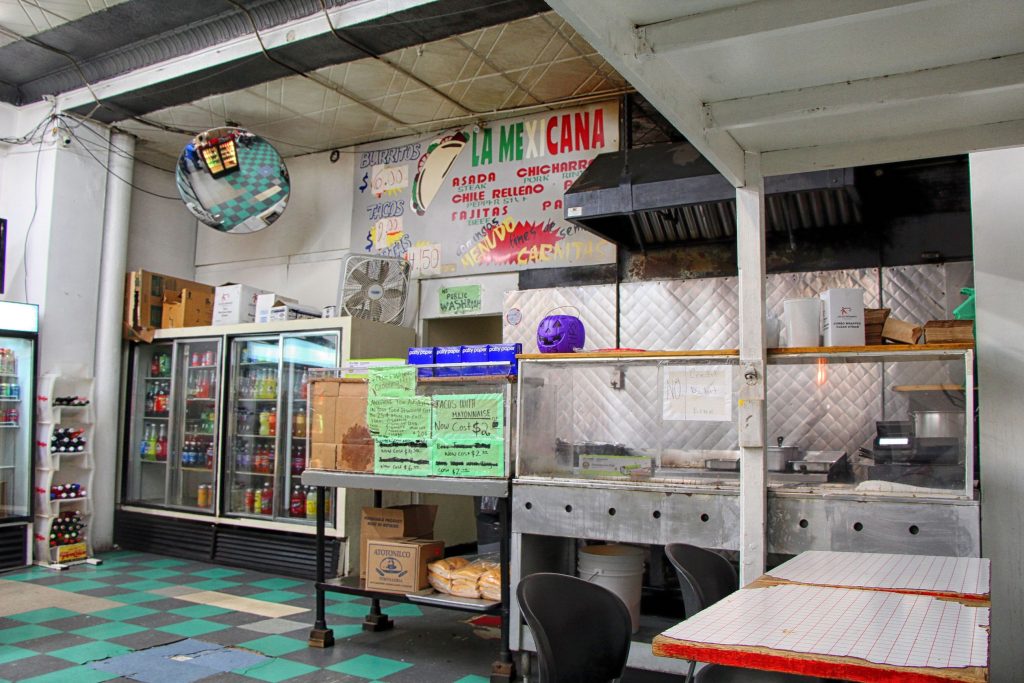

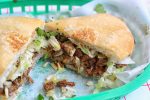
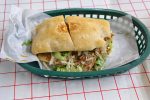




Recent Comments